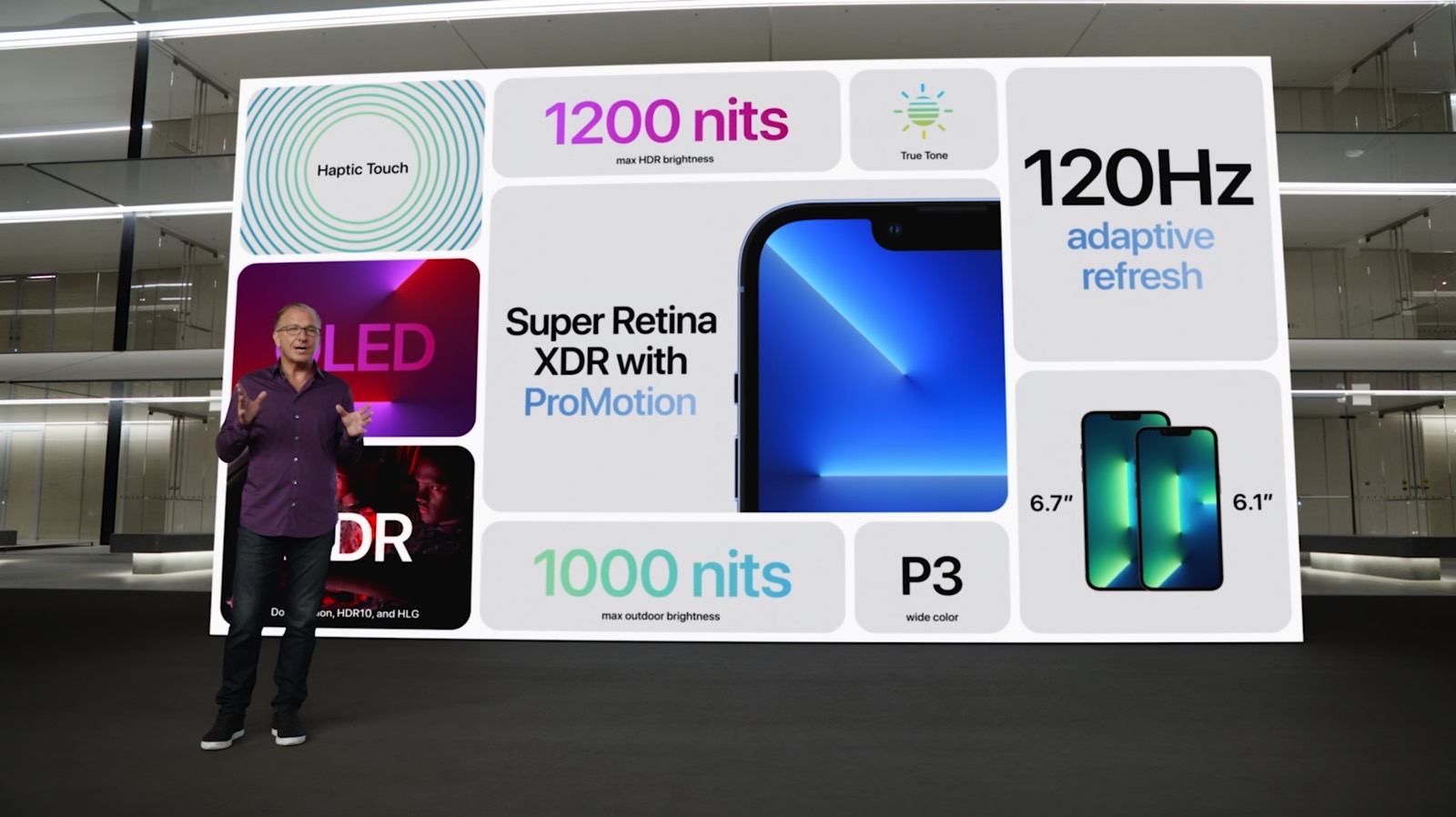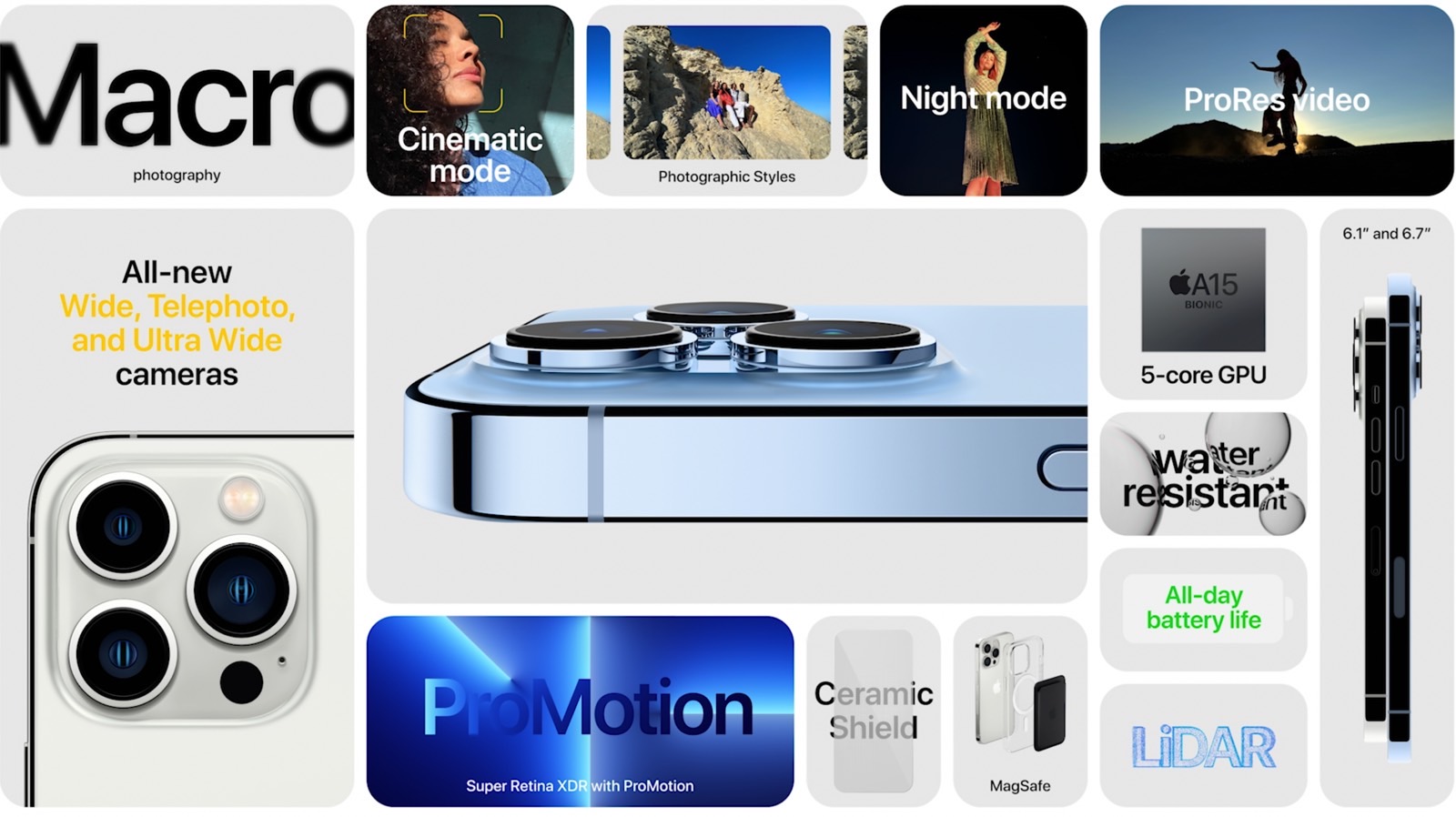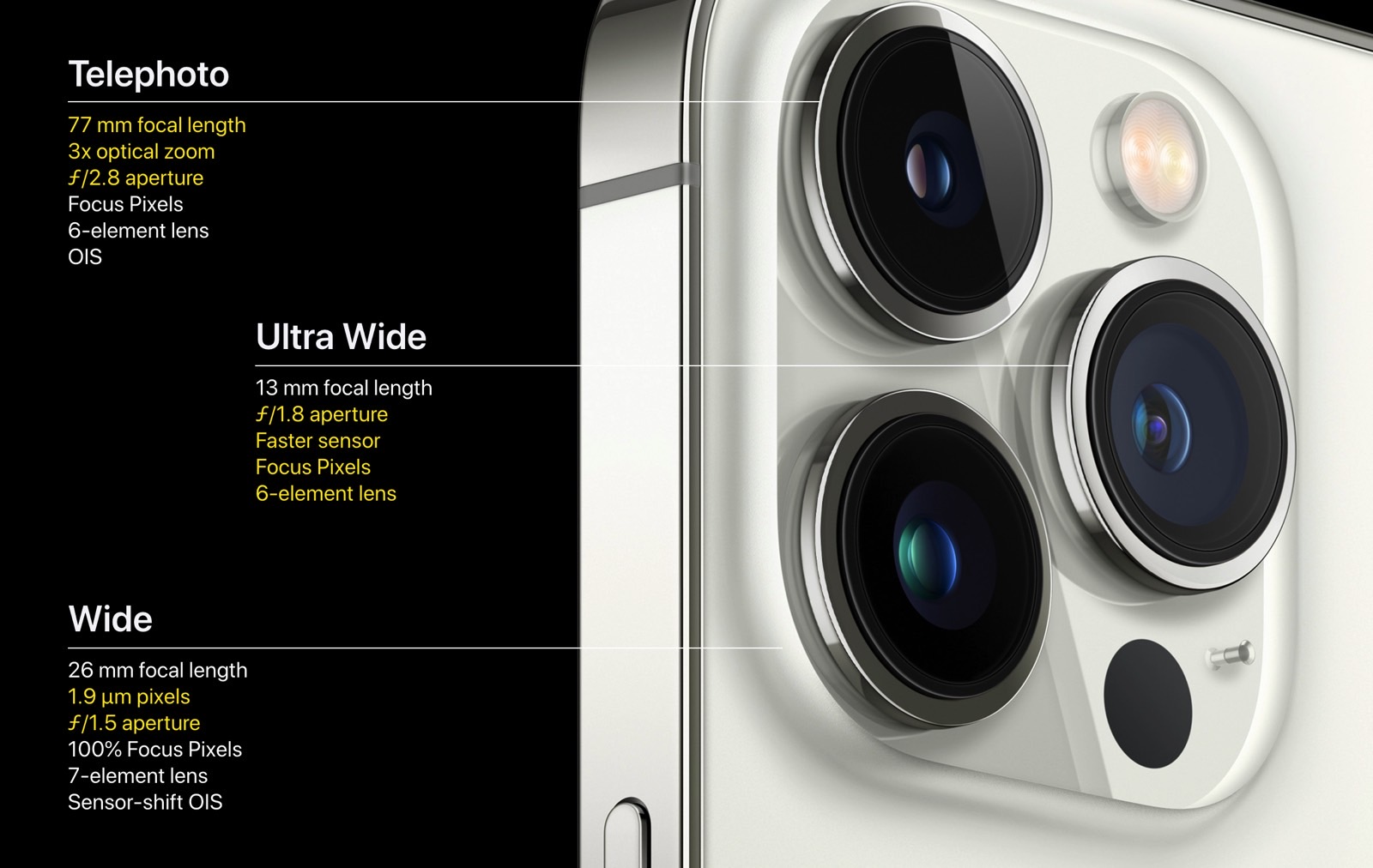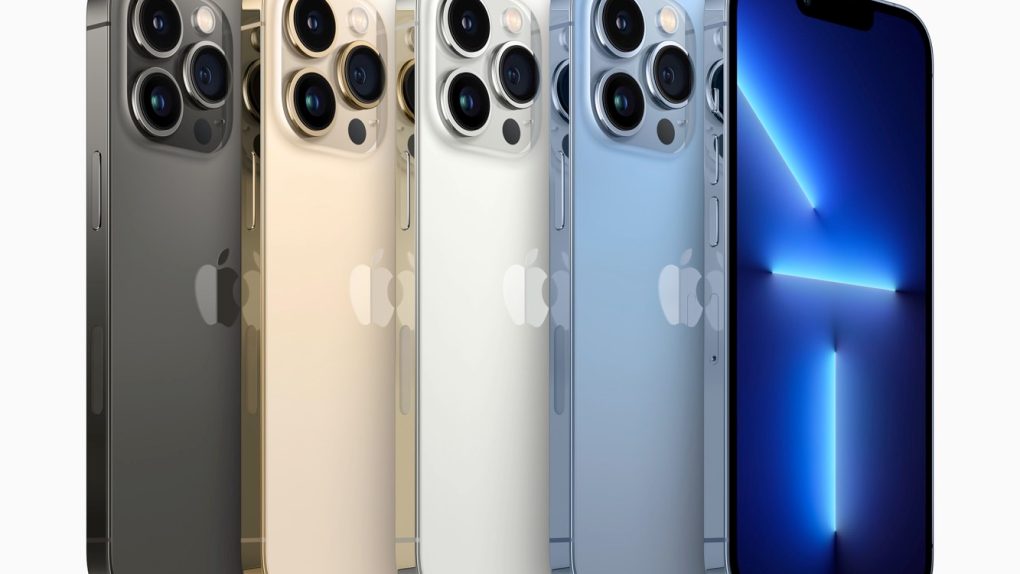Apple’s busy “California Streaming” event is underway, with the iPhone maker having already unveiled several of the products we were expecting from this year’s virtual show. Just like with previous mid-September events, the new iPhones models are the stars of the show. This year, we’re looking at the iPhone 13 series in four versions: iPhone 13 mini, iPhone 13, iPhone 13, and iPhone 13 Pro Max. After unveiling the main features of the cheapest versions, Apple launched the iPhone 13 variants that so many people have been waiting for. The iPhone 13 Pro and iPhone 13 Pro Max look just like their siblings, but they pack a few features unseen on other iPhones so far.
iPhone 13 Pro and iPhone 13 Pro Max design
The new iPhone Pro versions come in 6.1-inch and 6.7-inch versions. They have the overall design as their predecessors, including flat screens and flat edges. The iPhone 13 Pro and iPhone 13 Pro Max feature the same height and with as last year’s Pro versions, but they’re slightly thicker.
There are a few other notable design changes that buyers will notice immediately; the first concerns the display. The iPhone 13 Pro and iPhone 13 Pro Max feature smaller notches than before. Then, the rear camera lens on the back is thicker and larger than last year.

The 120Hz display and 1TB storage options
The iPhone 13 Pro models might look a lot like the iPhone 12 Pro versions and the cheaper iPhone 13 handsets. But they do feature two massive upgrades unseen on any other handsets. We’re looking at Apple’s first 120Hz ProMotion OLED panels for smartphones and storage support going up to 1TB.
iPhone fans have been waiting for years for the 120Hz screens to drop, but Apple waited for the right technology to come along. The iPhone 13 Pro and iPhone 13 Pro Max feature LTPO panels that allow iOS 15 to adjust the screen refresh dynamically, just like the Apple Watch. That means the screen refresh can run from 10Hz to 120Hz, depending on what’s shown on the screen.
Otherwise, the iPhone 13 Pro handsets feature the same high-end hardware as the iPhone 13 handsets. We’re looking at the next-gen A15 Bionic chip with a 5-core GPU, 5G support, Wi-Fi 6, Bluetooth 5.0, Ultra-Wideband chip, NFC connectivity, and four storage options. The basic models start at 128GB of storage, but 256GB, 512GB, and 1TB storage tiers are available.
The iPhone 13 Pro delivers 1.5 hours of extra battery life compared to its predecessor. The Max lasts 2.5 hours longer than the iPhone 12 Pro Max.

The iPhone 13 Pro Camera
Like previous Pro generations, the iPhone 13 Pro models feature better camera hardware than the regular iPhone 13 models. Both phones have the same camera setup, featuring three cameras each. Unlike last year when the iPhone 12 Pro Max got the better camera module, we’re now looking at identical hardware. Both iPhone 13 Pro phones will feature the same sensor-shift optical image stabilization (OIS) Wide primary camera.
The Wide, Ultra Wide, and Telephoto cameras all feature 12-megapixel sensors. Apple claims the iPhone 13 Pros feature its “biggest camera advancement ever.” The Wide sensor has 1.9μm pixels, f/1.5 aperture, and delivers up to 2.2x improvements in low light. The Ultra Wide camera features a six-element lens, f/1.8 aperture, and up to 92% improvement in low light. The telephoto lens features a 77mm focal length and 3x optical zoom. All three cameras support Night Mode photography.
The new Pro handsets also support macro photography, letting users shoot subjects as close as 2cm.
When it comes to software features, Apple announced new “Photographic Styles” for photography. Even more exciting is the Cinematic mode that automatically switches focus as the subject changes. Users can also modify focus and add bokeh events after the recording is finished. The camera will also support ProRes video recording.

The price and release date
As always, with new iPhones, preorders will start on the Friday after the announcement, September 17th. The official release date is September 24th.
The 128GB iPhone 13 Pro starts at $999, with the 128GB iPhone 13 Pro Max priced at $1,099. The phones will be available in Sierra Blue, Silver, Gold, and Graphite.









